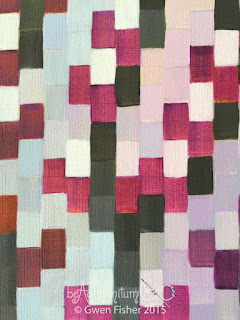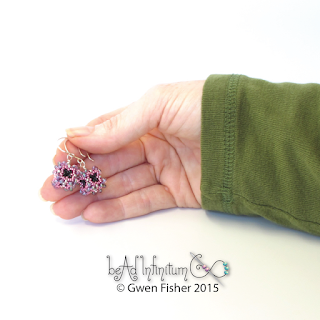Off my cutting mat is this sweater hoodie tunic dress of mostly wool with a touch of cashmere.
 The
focus of this piece is the cabled, multi-color wool sweater from my
closet that I loved but rarely wore. It's a bit scratchy, and the
neckline was so high that I could only wear it with a turtleneck shirt. I haven't worn a turtleneck since I left Wisconsin in 2001. Thus, that sweater sat lonely in my closet waiting for a more useful life. Last week, I decided to upcycle it into something new, cut it apart, and stitch the patches back together with a bunch of
other sweaters to make something wearable and wonderful, a cozy piece of art to keep you warm.
The
focus of this piece is the cabled, multi-color wool sweater from my
closet that I loved but rarely wore. It's a bit scratchy, and the
neckline was so high that I could only wear it with a turtleneck shirt. I haven't worn a turtleneck since I left Wisconsin in 2001. Thus, that sweater sat lonely in my closet waiting for a more useful life. Last week, I decided to upcycle it into something new, cut it apart, and stitch the patches back together with a bunch of
other sweaters to make something wearable and wonderful, a cozy piece of art to keep you warm.
I always loved the design of that sweater, but I hated the neckline. So, I redesigned the neckline to keep the scratchiness off your neck. To do this, I binded the neckline (and the sleeve ends) with soft cashmere in forest green. I used this same cashmere to line the pouch pocket in the front to keep hands cozy and warm. Yup, the pocket is super soft inside.
 The cut is a tunic dress
that drapes slightly longer on the sides. It has a roomy hood that is still functional. It isn't
so big that it will fall over your eyes when you wear it. When the
hood is down, it forms a large wide collar, a large cowl neck, which frames your face and
keeps your shoulders warm.
The cut is a tunic dress
that drapes slightly longer on the sides. It has a roomy hood that is still functional. It isn't
so big that it will fall over your eyes when you wear it. When the
hood is down, it forms a large wide collar, a large cowl neck, which frames your face and
keeps your shoulders warm.


This work was inspired by the amazing sweater coats of Katwise, with help from her tutorials. Find her on Etsy here: https://www.etsy.com/shop/katwise

I always loved the design of that sweater, but I hated the neckline. So, I redesigned the neckline to keep the scratchiness off your neck. To do this, I binded the neckline (and the sleeve ends) with soft cashmere in forest green. I used this same cashmere to line the pouch pocket in the front to keep hands cozy and warm. Yup, the pocket is super soft inside.

I hand dyed the pretty burgundy
sweater on the torso with wool dyes. It is soft fluffy lamb's wool. The other colors include dark pink, gray, navy,
blue, brown, olive, and a touch of golden yellow. The seams are dark
pink.

Most of the seams and hems are professionally sewn with
four polyester threads on my serger sewing machine. Some of the finer
detailing, I first edged on my serger and then I stitched by hand with
pink wool yarn. The hand stitching adds visual interest and gives me
more control when assembling the pieces to keep the wonkiness to a minimum, especially around the hands and face. You can see the hand stitching on the sleeve hems, the pouch
pocket and the inside of the collar. This sweater very well made,
comfortable and warm. It is number 10 in my ongoing series of upcycled sweaters.

This work was inspired by the amazing sweater coats of Katwise, with help from her tutorials. Find her on Etsy here: https://www.etsy.com/shop/katwise













































